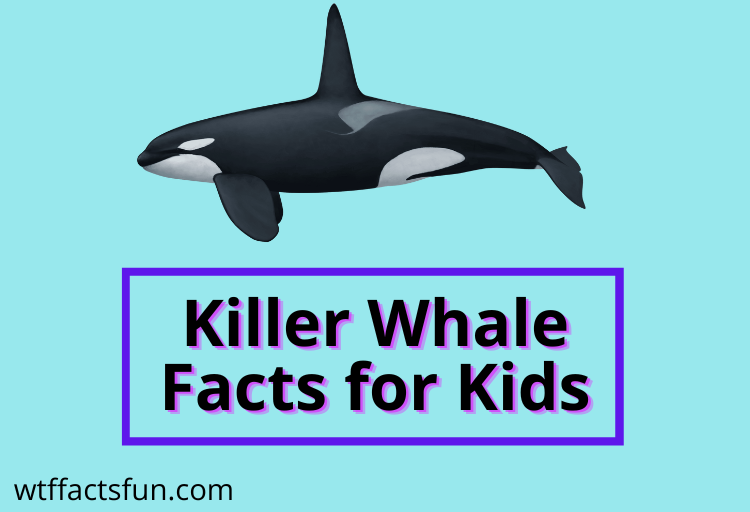
Table of Contents
- 1 Killer Whale Facts for Kids
- 2 1. Not Whales, but Dolphins!
- 3 2. The Black and White Beauty
- 4 3. Social Butterflies
- 5 4. Multilingual Orcas
- 6 5. Apex Predators
- 7 6. Powerful Flippers
- 8 7. Super Swimmers
- 9 8. Sharp Teeth
- 10 9. Breaching Fun
- 11 10. Global Distribution
- 12 11. Lifespan
- 13 12. Playful Personalities
- 14 13. Hunting Strategies
- 15 14. Maternal Bonds
- 16 15. Matriarchal Societies
- 17 16. Echolocation
- 18 17. Distinct Populations
- 19 18. Cultural Traditions
- 20 19. Conservation Challenges
- 21 20. Educational Opportunities
- 22 Final words:
Killer Whale Facts for Kids
Killer Whale Facts for Kids: Killer whales, also known as orcas, are among the most captivating creatures that roam the oceans. These magnificent marine mammals have long fascinated both adults and children alike. In this article, we’ll dive into the world of killer whales, uncovering a treasure trove of fascinating facts that are sure to captivate the minds of kids. Let’s embark on this thrilling journey and explore the awe-inspiring world of orcas.
1. Not Whales, but Dolphins!
Despite their name, killer whales are not actually whales. They belong to the dolphin family and are the largest dolphins in the world. Their scientific name is Orcinus orca.
2. The Black and White Beauty
Killer whales are easily recognizable by their distinctive black and white coloration. They have sleek, torpedo-shaped bodies with a white underside and black on top, helping them blend with the ocean when viewed from below and the sky when seen from above.
3. Social Butterflies
Killer whales are incredibly social animals. They live in groups called pods, which can consist of anywhere from a few individuals to over 30 members. These pods work together like a close-knit family.
4. Multilingual Orcas
Each killer whale pod has its own unique language or dialect. They communicate with each other using a variety of sounds, including clicks, whistles, and even songs. These vocalizations help them coordinate hunting and social interactions.
5. Apex Predators
Killer whales are fierce predators and sit at the top of the marine food chain. Their diet includes a wide range of prey, such as fish, squid, seals, sea lions, and even other whales.
6. Powerful Flippers
These marine mammals are equipped with strong, muscular flippers that help them steer, navigate, and even slap the water’s surface. It’s not uncommon to see killer whales playfully slapping their flippers on the ocean’s surface.
7. Super Swimmers
Killer whales are exceptionally fast swimmers and can reach speeds of up to 34 miles per hour (55 km/h). Their streamlined bodies and powerful tails make them agile in the water.
8. Sharp Teeth
Killer whales have rows of sharp teeth, and they use them for grasping and tearing apart their prey. An adult killer whale can have up to 56 teeth, each about the size of a human hand!
9. Breaching Fun
One of the most spectacular sights in the animal kingdom is when killer whales breach. This means they leap out of the water and splash back in. Scientists believe they do this for communication, to get rid of parasites, or just for fun!
10. Global Distribution
Killer whales are found in oceans all over the world, from the icy waters of the Arctic to the warm seas near the equator. They are highly adaptable and can thrive in various marine environments.
11. Lifespan
Killer whales have a relatively long lifespan. In the wild, they can live for 50 to 80 years, while those in captivity tend to have shorter lifespans.
12. Playful Personalities
Orcas are known for their playful nature. They often engage in activities like riding the waves created by boats, playing with seaweed, and even tossing objects into the air.
13. Hunting Strategies
Killer whales are skilled hunters, and they use a variety of techniques to catch their prey. Some pods work together to create waves that wash seals off ice floes, making it easier to catch them.
14. Maternal Bonds
Mother orcas have a strong bond with their calves and provide them with care and protection. Calves stay close to their mothers for several years, learning essential skills from them.
15. Matriarchal Societies
Killer whale pods are often led by a female, known as the matriarch. She plays a central role in decision-making for the group and shares her knowledge and experience.
16. Echolocation
Orcas use echolocation to navigate and locate prey. They emit clicks, which bounce off objects and return as echoes, helping them create a mental map of their surroundings.
17. Distinct Populations
There are different types of killer whales, each with its unique characteristics and behaviors. For example, some orcas primarily eat fish, while others specialize in hunting marine mammals.
18. Cultural Traditions
Killer whales have cultural traditions that are passed down through generations. These traditions include hunting techniques, vocalizations, and even specific ways of playing.
19. Conservation Challenges
Despite their strength and adaptability, killer whales face several conservation challenges, including pollution, habitat destruction, and disturbance from human activities.
20. Educational Opportunities
Learning about killer whales can be a fun and educational experience for kids. Many aquariums and marine centers offer programs and exhibits that allow children to discover more about these incredible creatures and the importance of marine conservation.
Final words:
In conclusion, killer whales are truly remarkable creatures that continue to inspire wonder and curiosity in people of all ages. Their strong family bonds, intelligence, and prowess as hunters make them a captivating subject of study. As we marvel at these majestic marine mammals, let’s remember the importance of conservation efforts to ensure the survival of these incredible animals for generations to come.
Read also:
19 Interesting Fun Facts about Red Pandas for Kids
Generac Guardian 7043 Installation Cost & Price